Pity. Because if owners did, they’d really feel how fast it was, rather than just know it set a 6min 44.97sec lap of the… well, you know where.
It does that by being more powerful, lighter, more aerodynamically clever, dynamically tweaked and having more grippy tyres than before. The full engineering gamut, then.
Let’s start with the engine. The 6.5-litre V12 has titanium inlet valves, a lighter flywheel, less internal friction, an 8700rpm limiter and now makes 759bhp at 8500rpm. More important, though, peak torque was at 5500rpm on the Aventador SV but then tailed away rapidly; the SVJ makes more torque through the entire rev range – before and including 5500rpm – but its 531lb ft peak doesn’t arrive until 6750rpm and its curve is flatter after that; so considerably more torque reaches the wheels all the time.
Those wheels are lighter, as are several other body components, so this (dry) is a 1525kg car, although given a fuelled Huracán Performante was 200kg more than its claimed dry weight when we put it on our scales last year, you can imagine where this will end up.
Chassis changes see springs unchanged but dampers and anti-roll bars stiffer, and the torque split typically 3% more biased to the rear; although it varies anyway. The front is disconnected entirely during braking, to mean the only steering wheel inputs are from braking, and there’s active rear-steer.
Then there’s the improved aero, which brings the SVJ 40% more downforce than an Aventador S but, significantly, is a second-generation ‘ALA’ (Aerodinamica Lamborghini Attiva 2.0), which can push turbulent air out beneath the rear spoiler, to stall it, reducing downforce and drag, and which it can split from left to right. In cornering, then, the SVJ will make more downforce on the inside of the bend, which keeps the body flatter and helps turn-in. Overall lateral g isn’t necessarily increased (you’d just put a massive wing on if you wanted to do that), but it apparently means less lock is required to get into a turn, and given less applied lock, more power can be applied, making corner exit quicker. I don’t think it makes a lot of difference to an overall lap time: between one and three seconds around a near seven-minute lap, according to an engineer.
Making a bigger difference is the option, for the first time, of race-derived Pirelli P Zero Trofeo tyres, rather than Corsas, as on other Aventadors. It’s the first time the Aventador has been offered on this rubber, which alone is worth around 10 seconds on a long lap.
The SVJ is limited to 900 units, and costs £360,000.
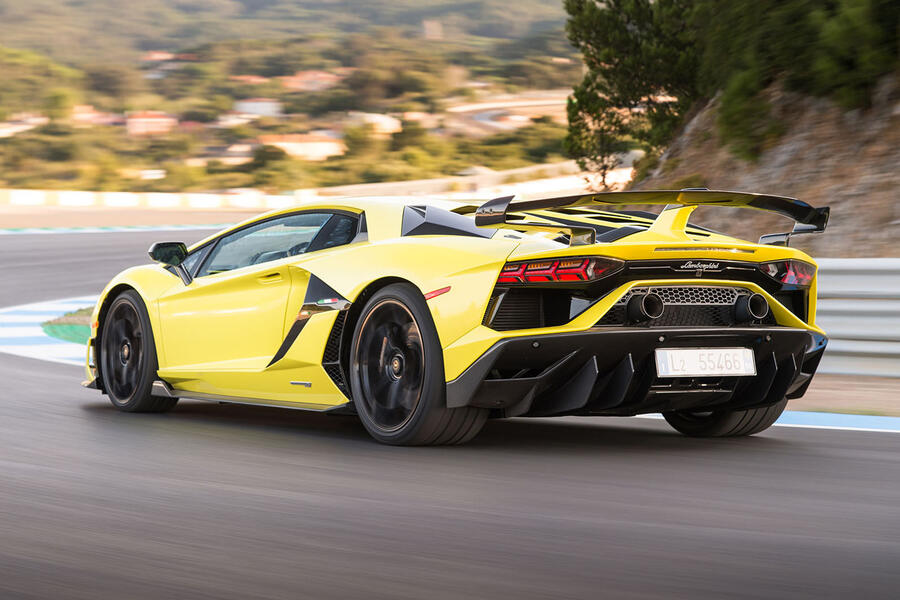

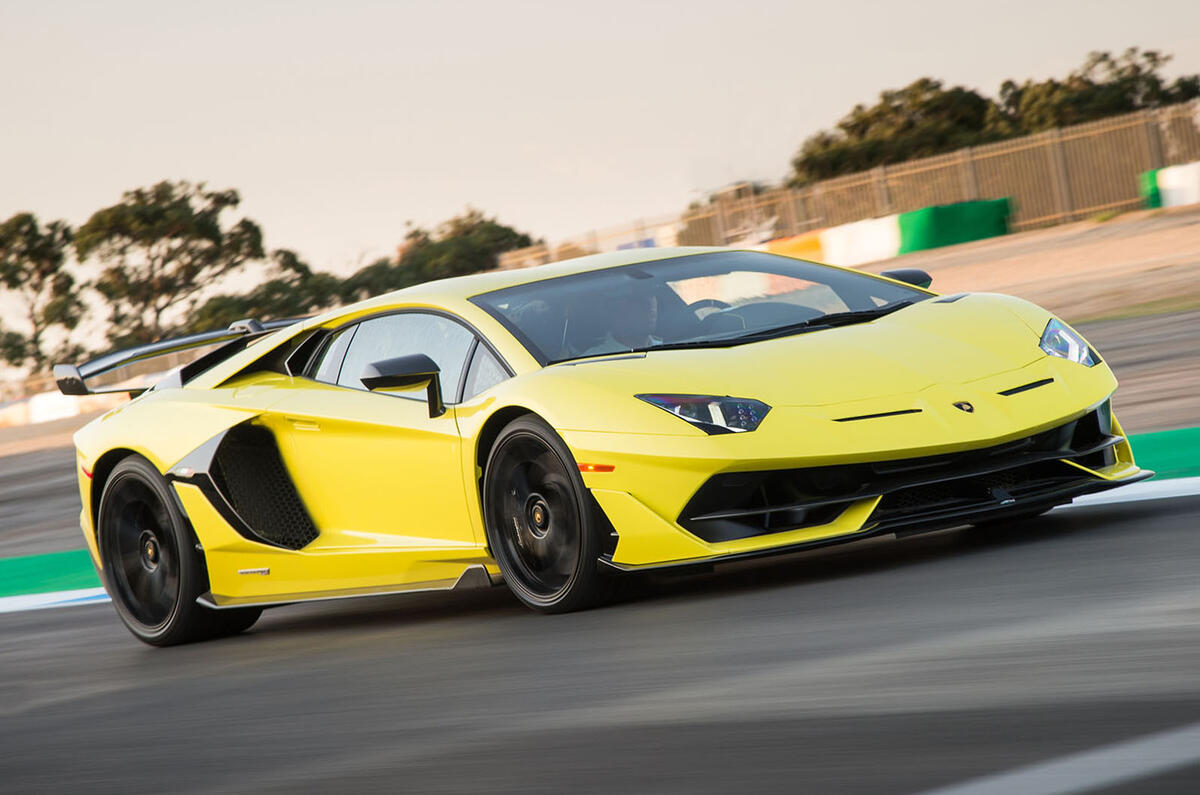
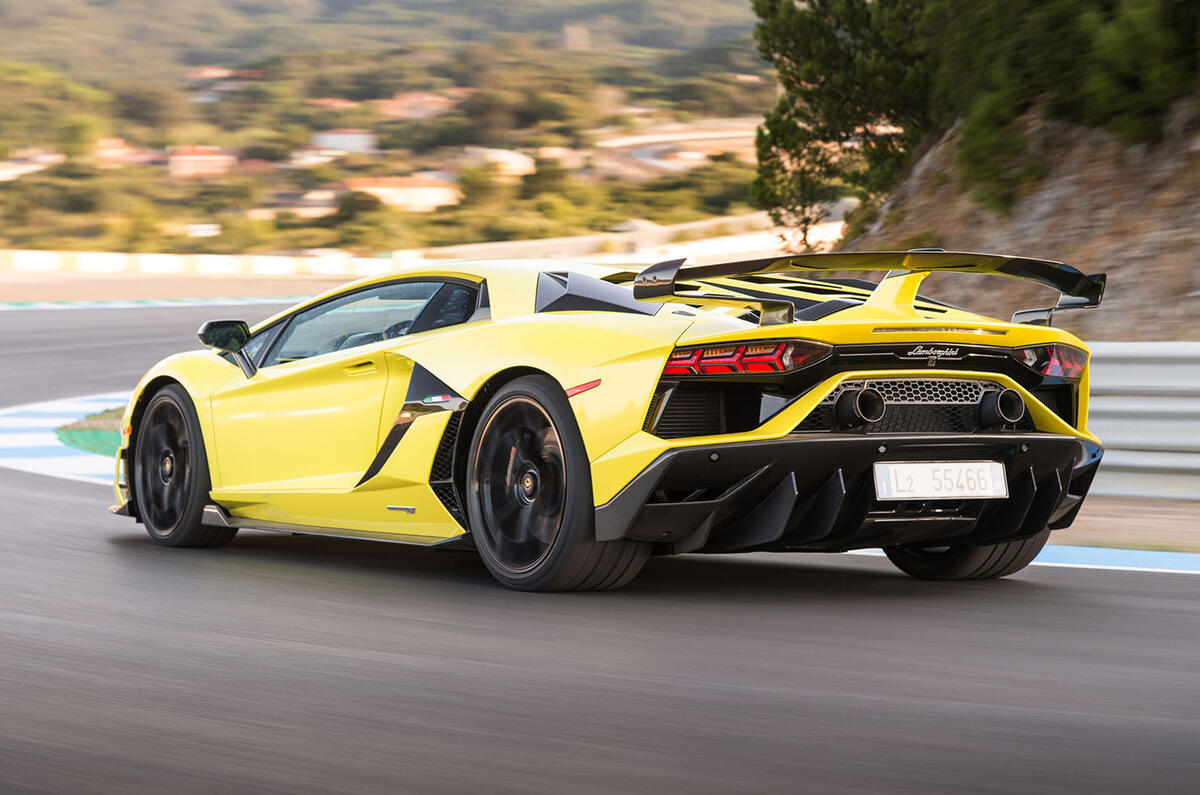
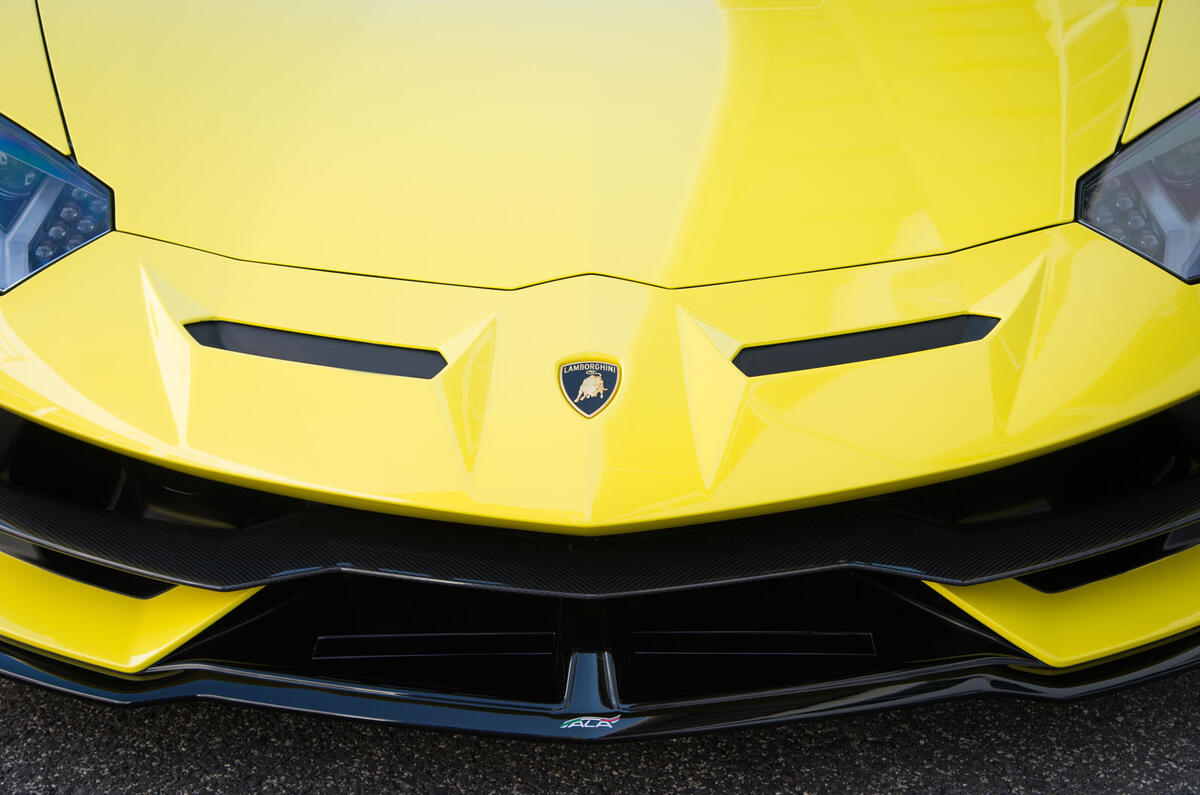
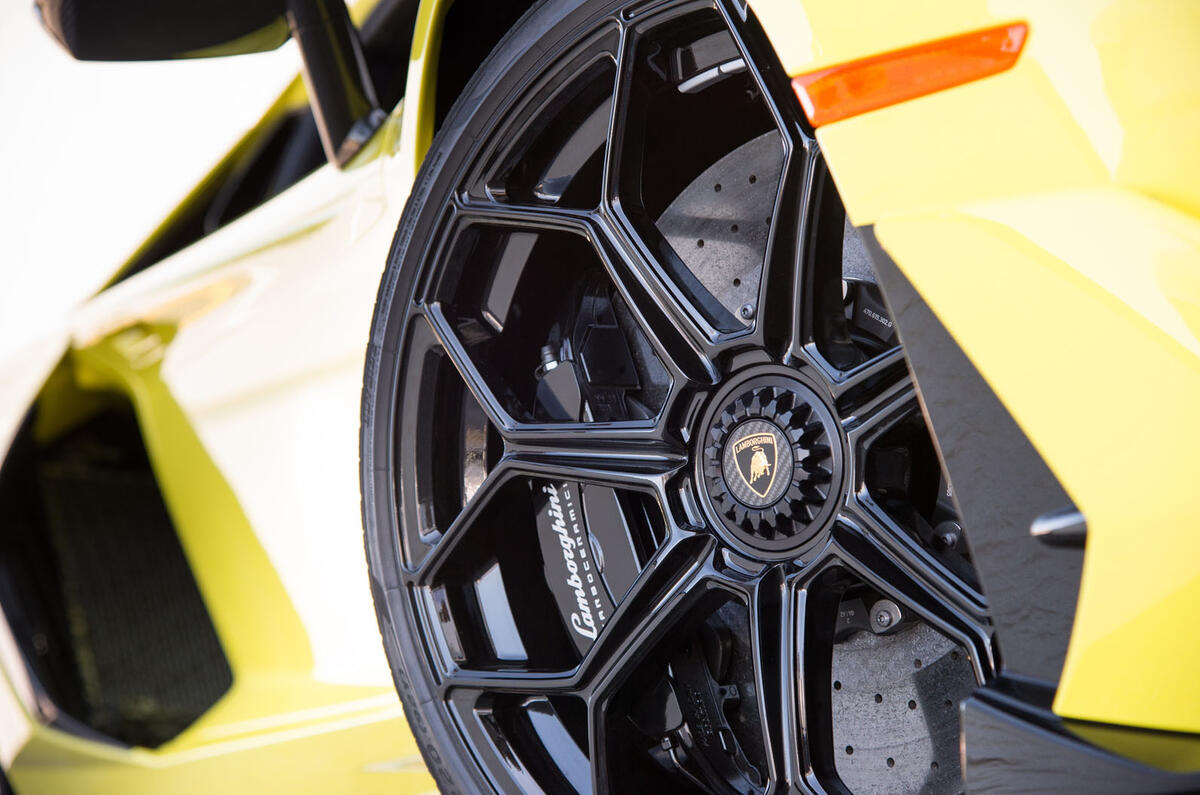
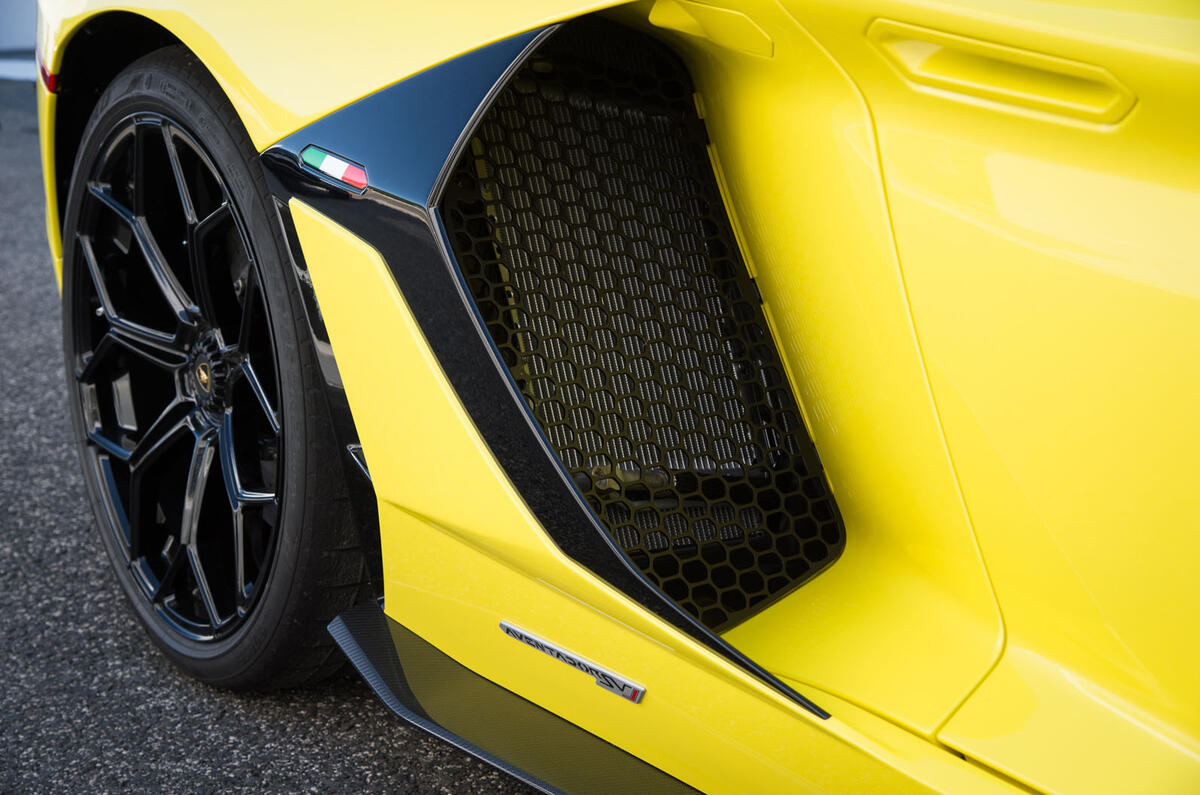
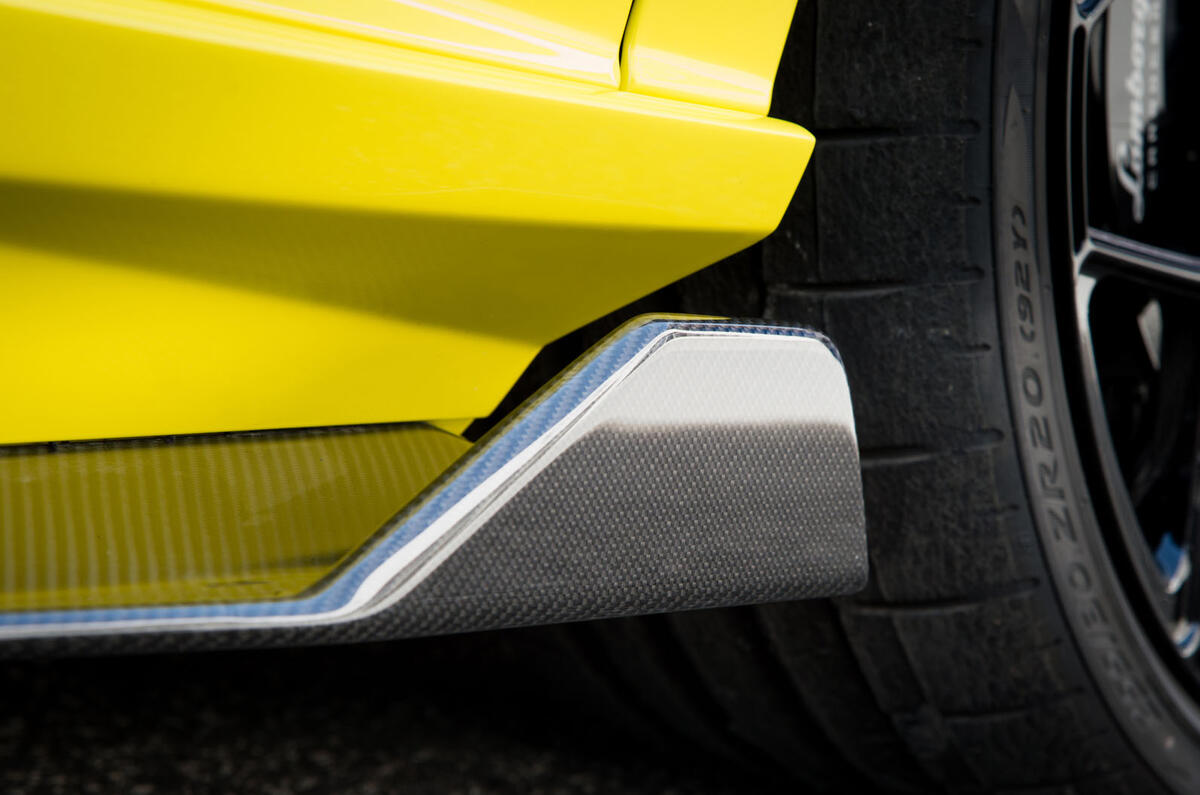
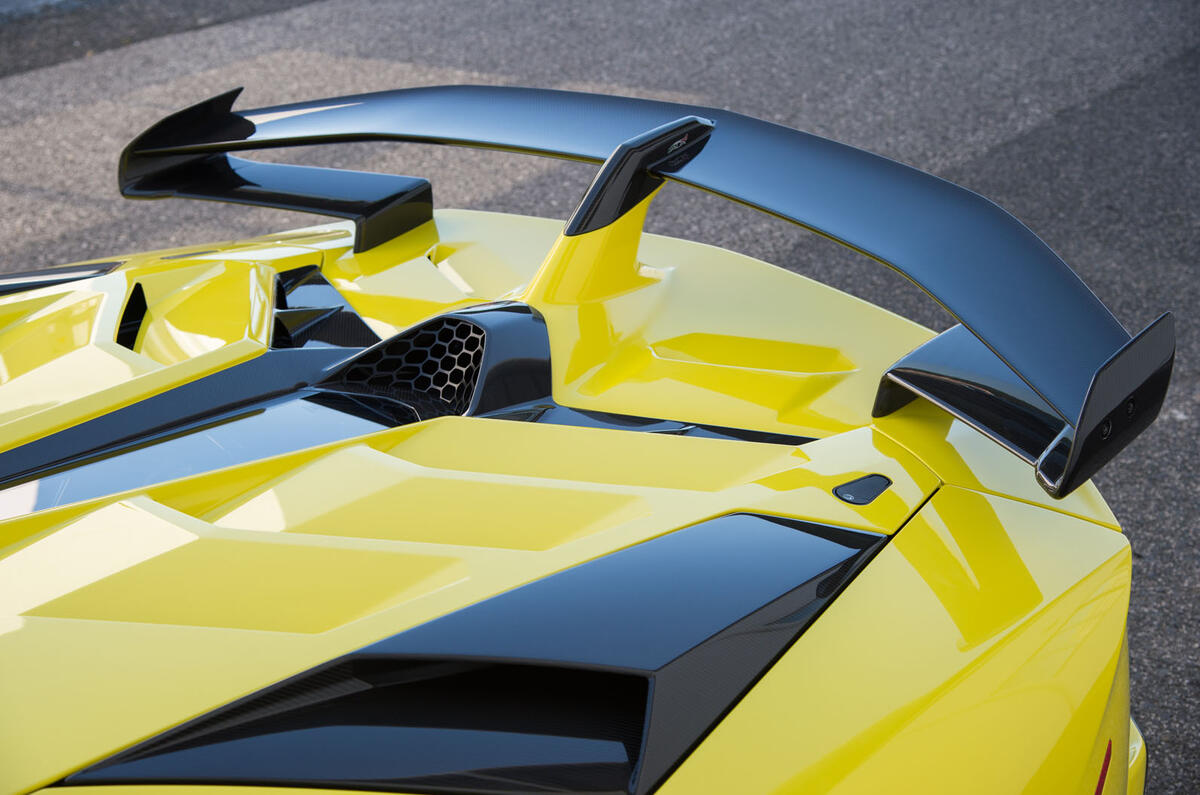
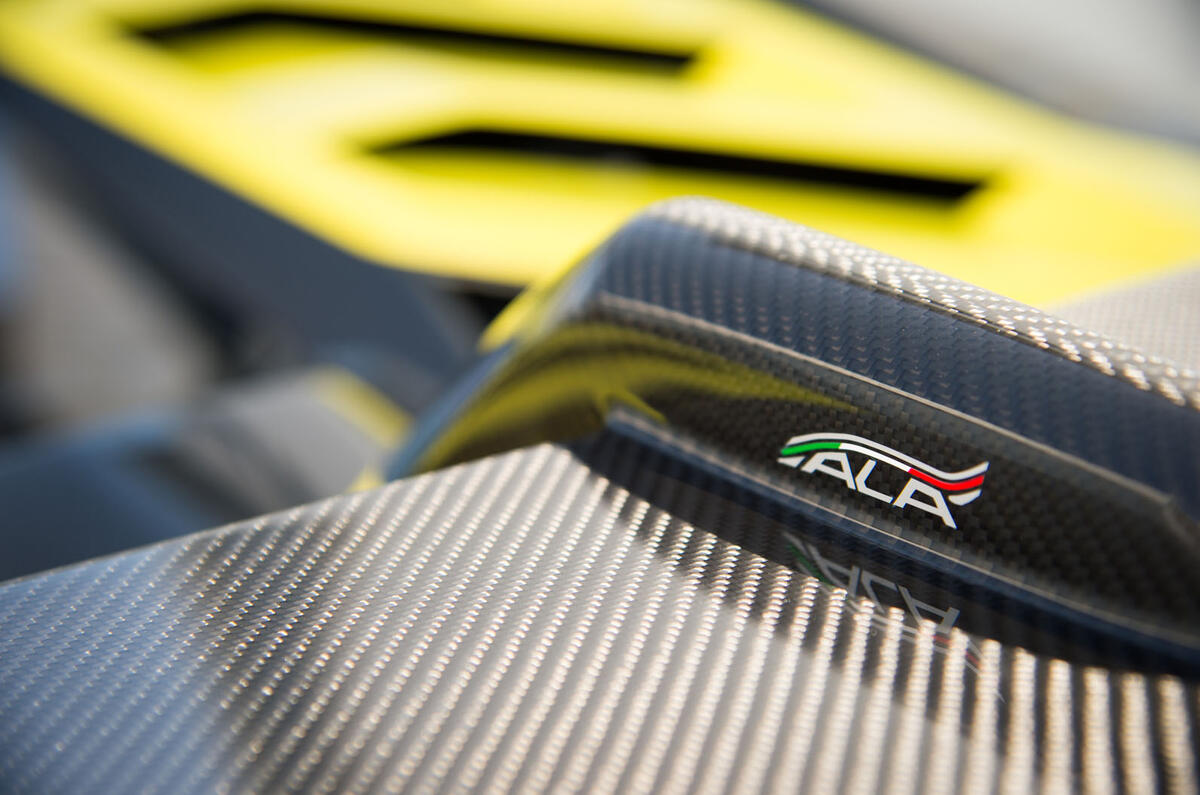
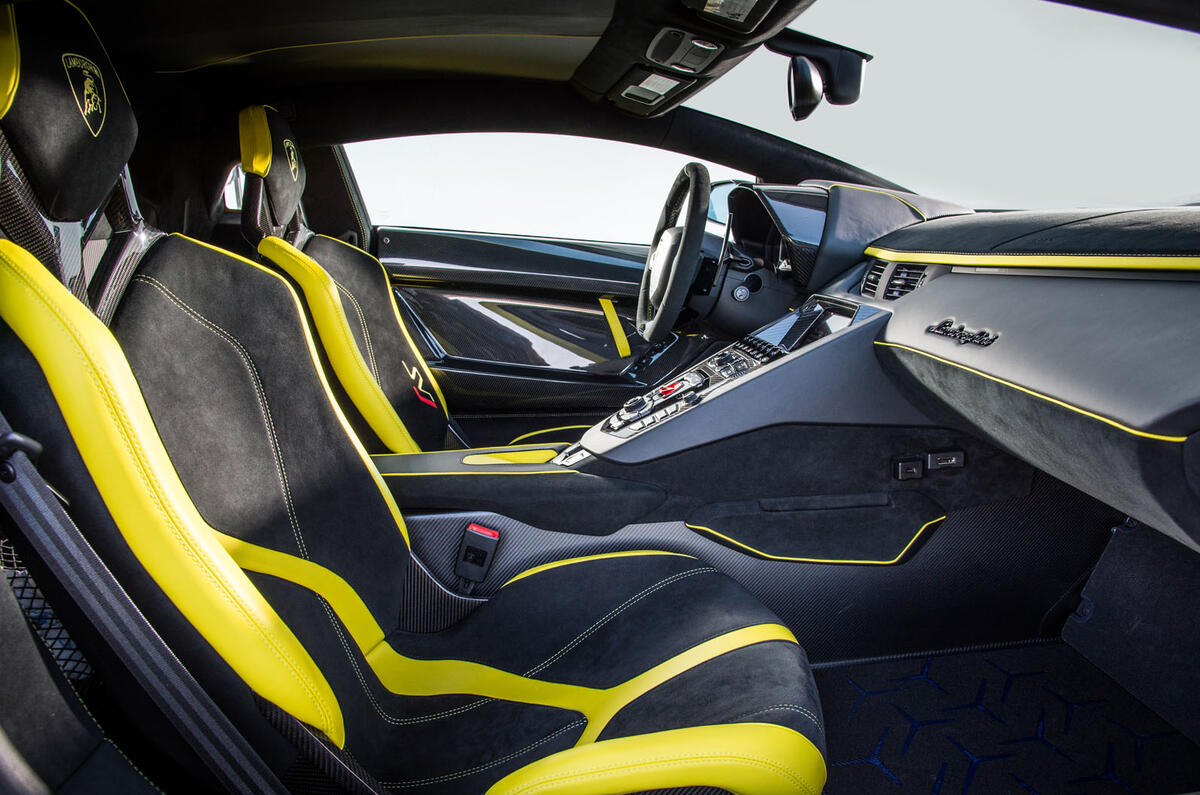
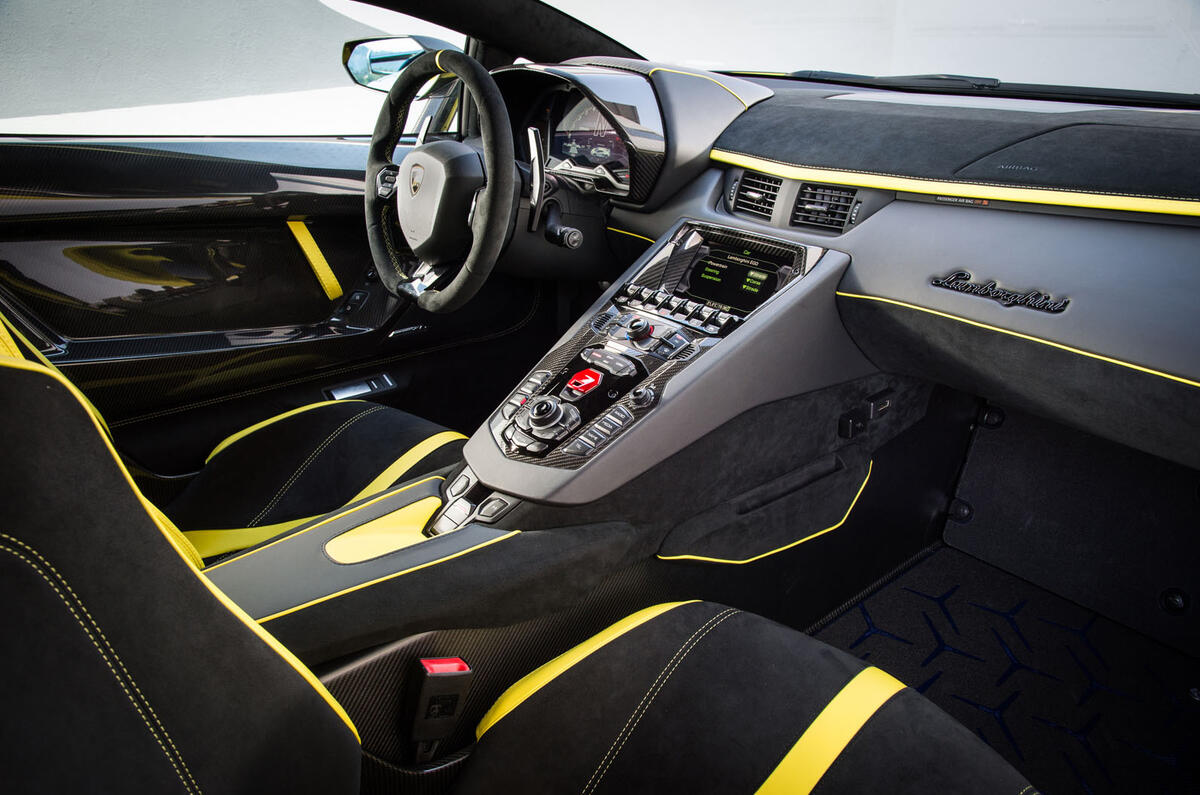
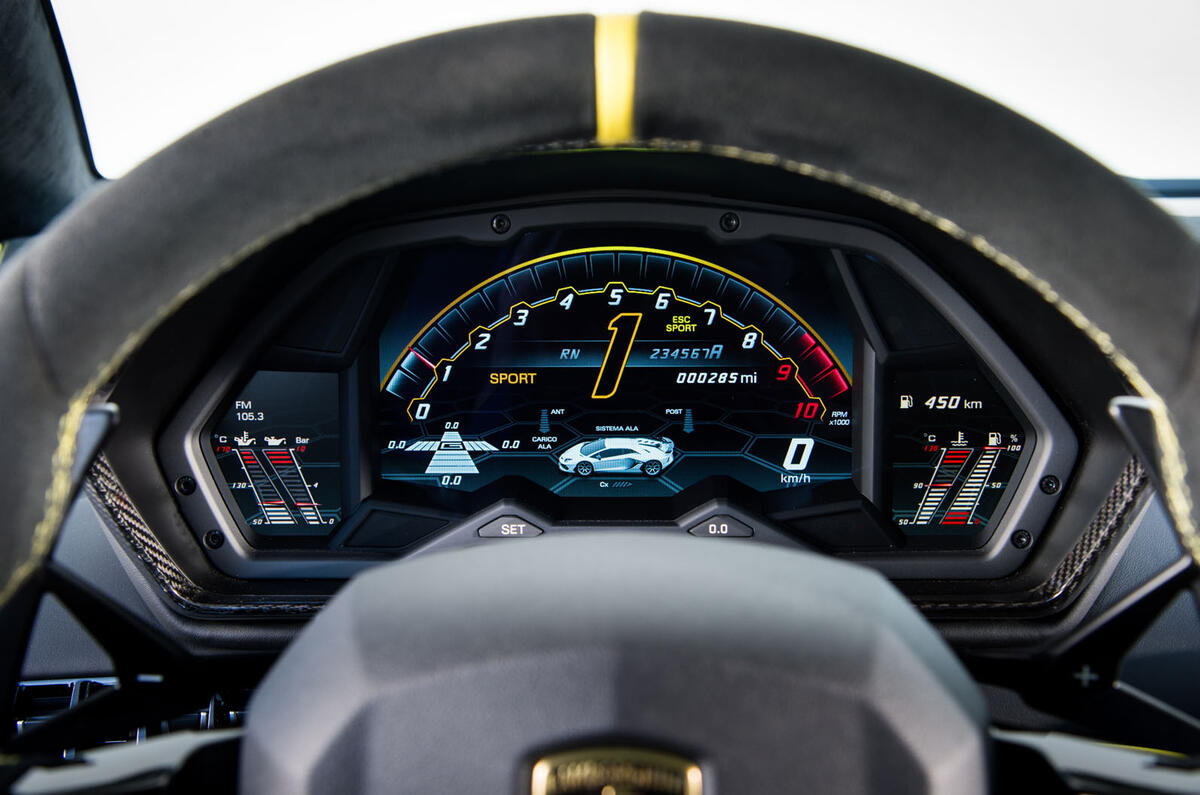
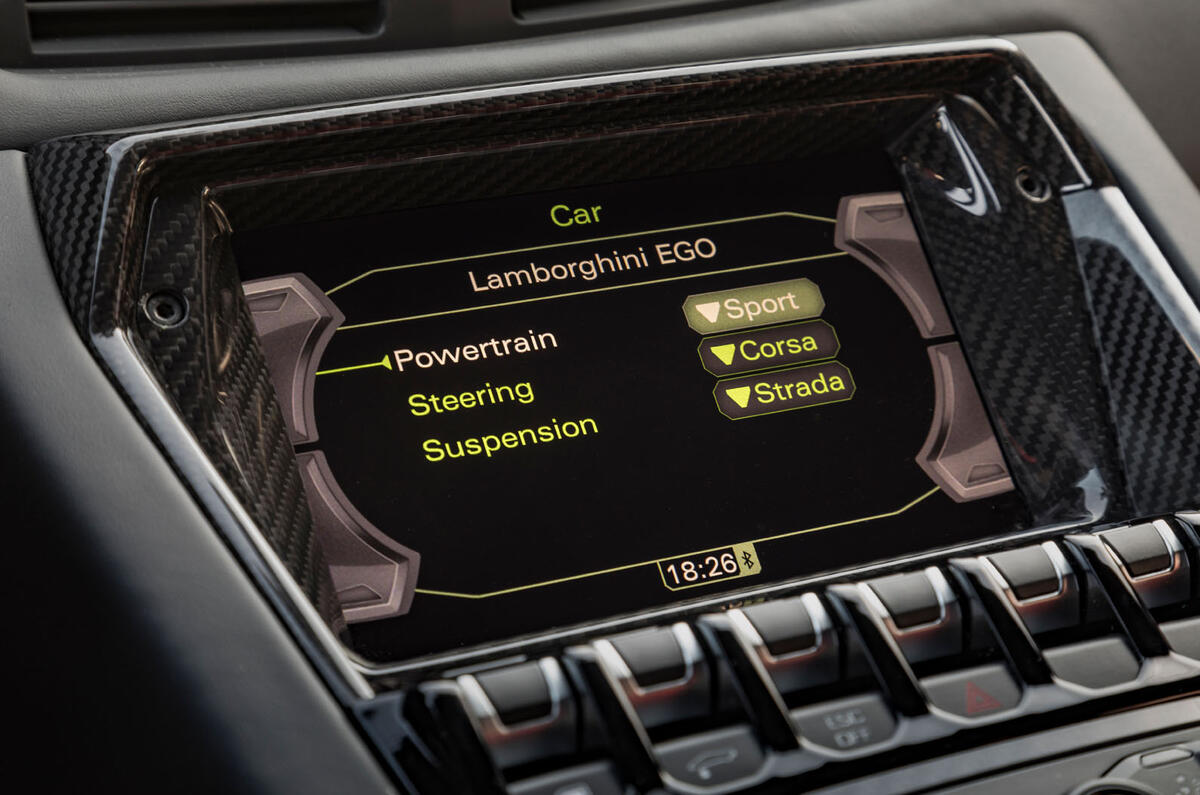
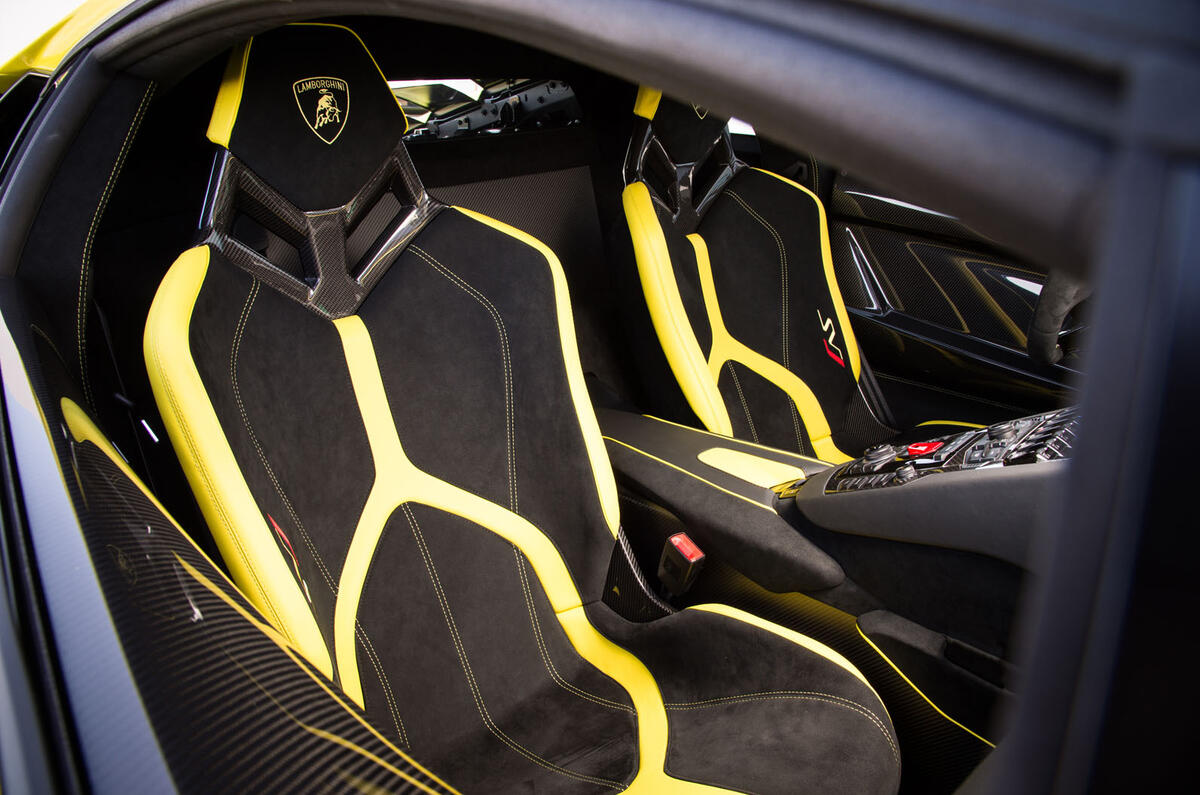
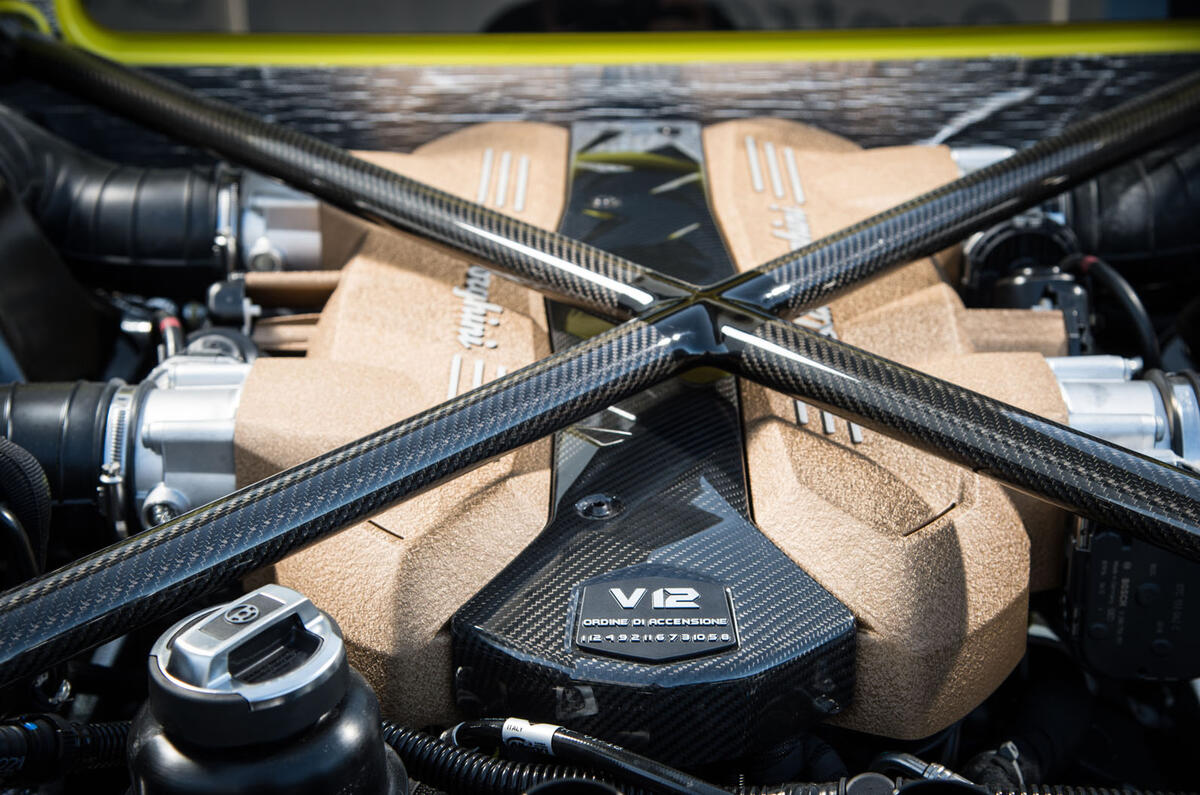
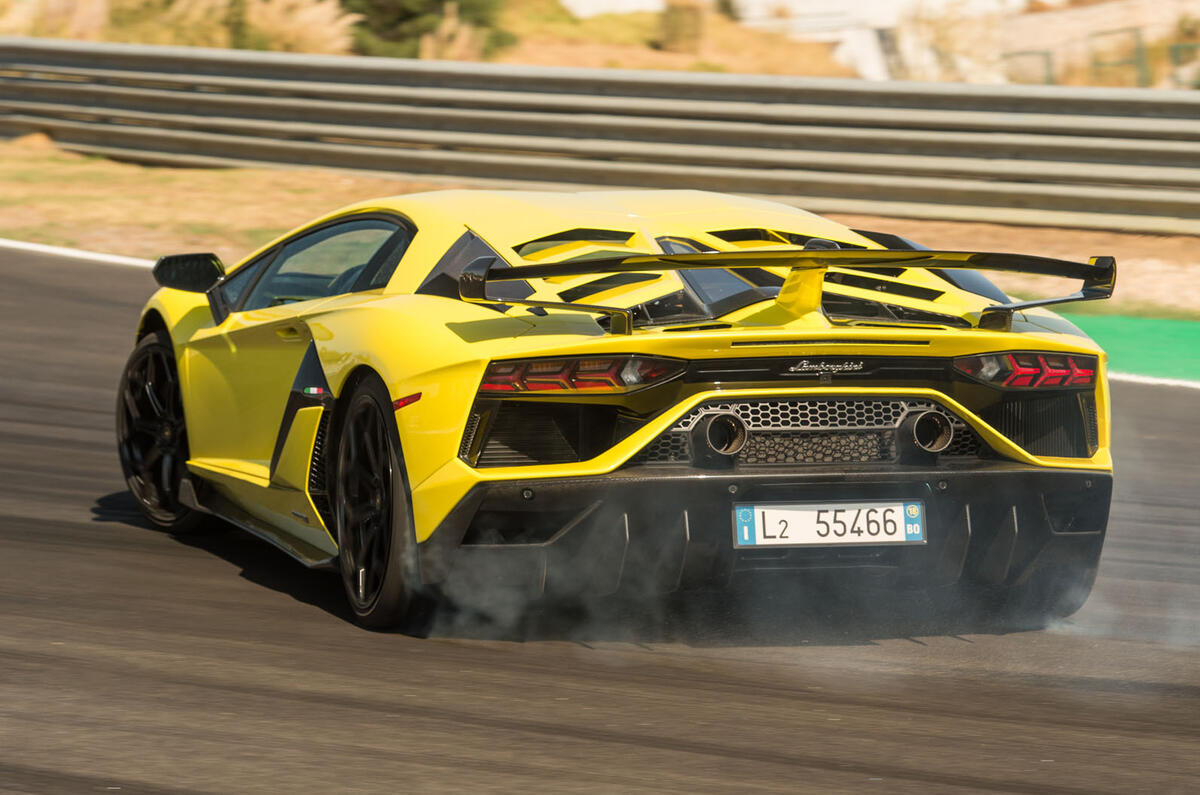
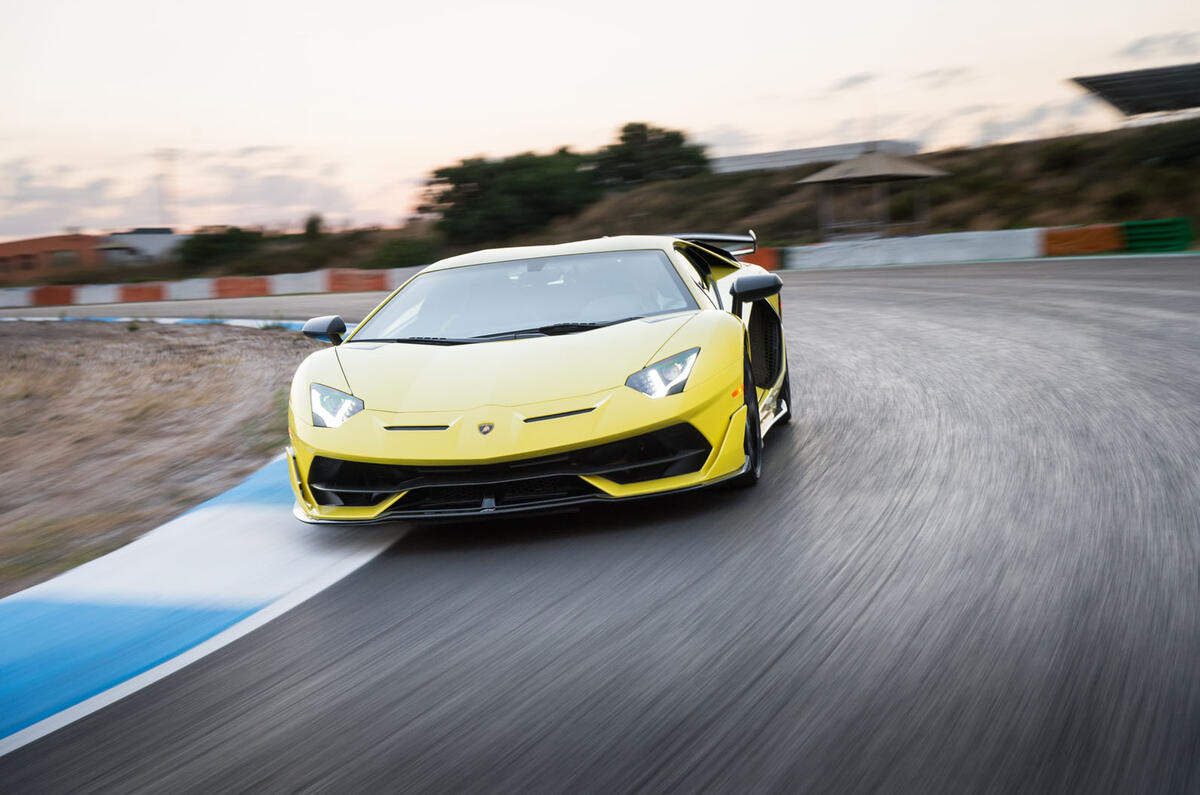
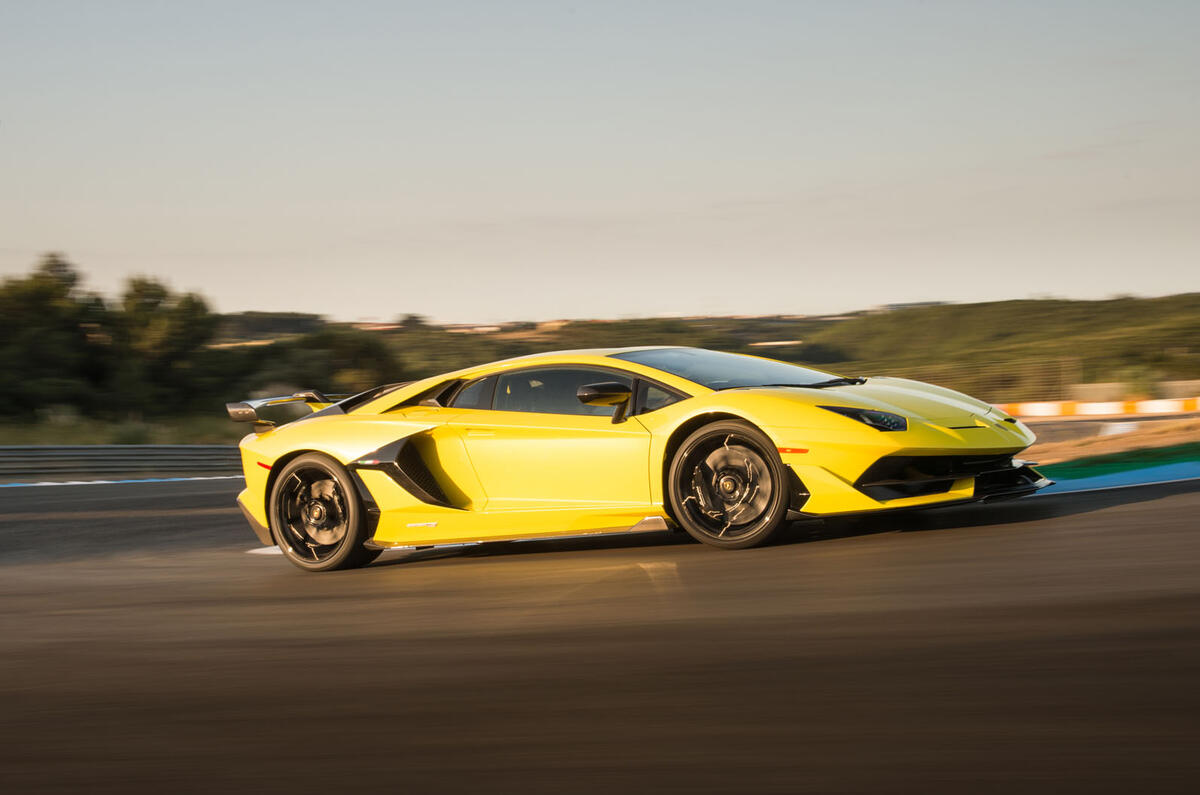
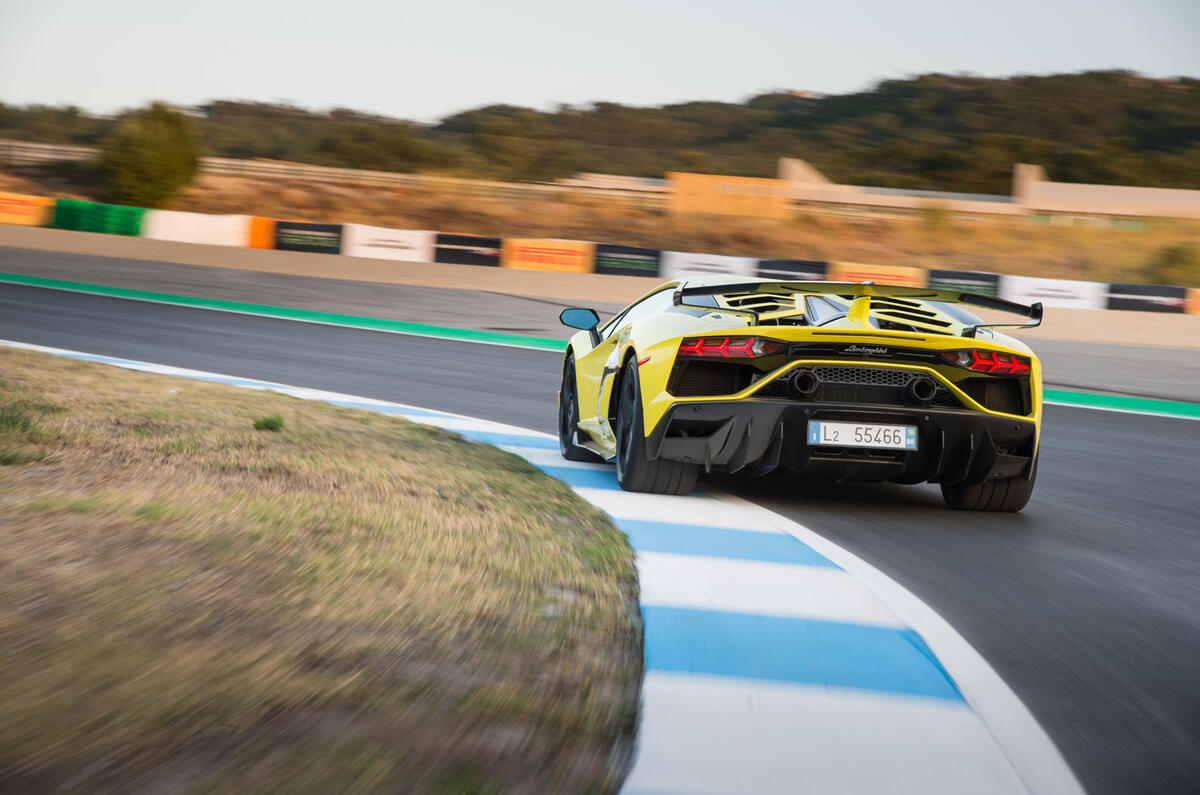
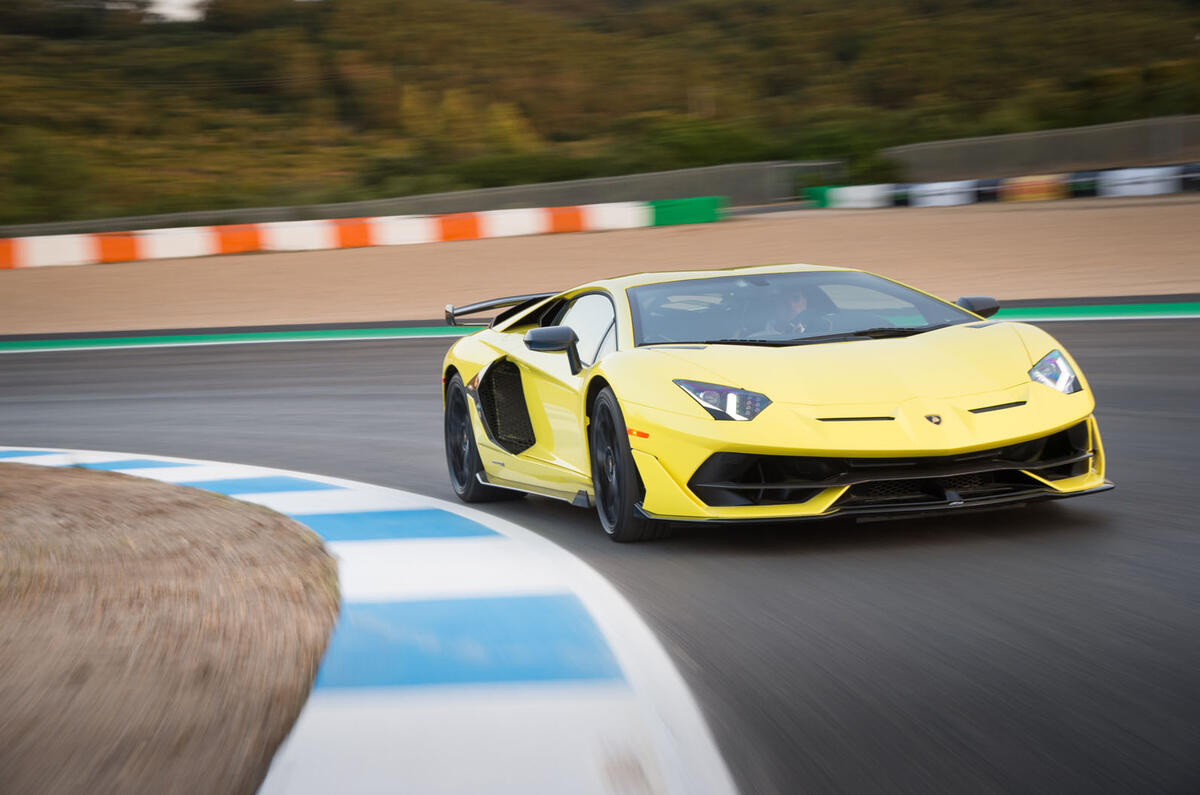
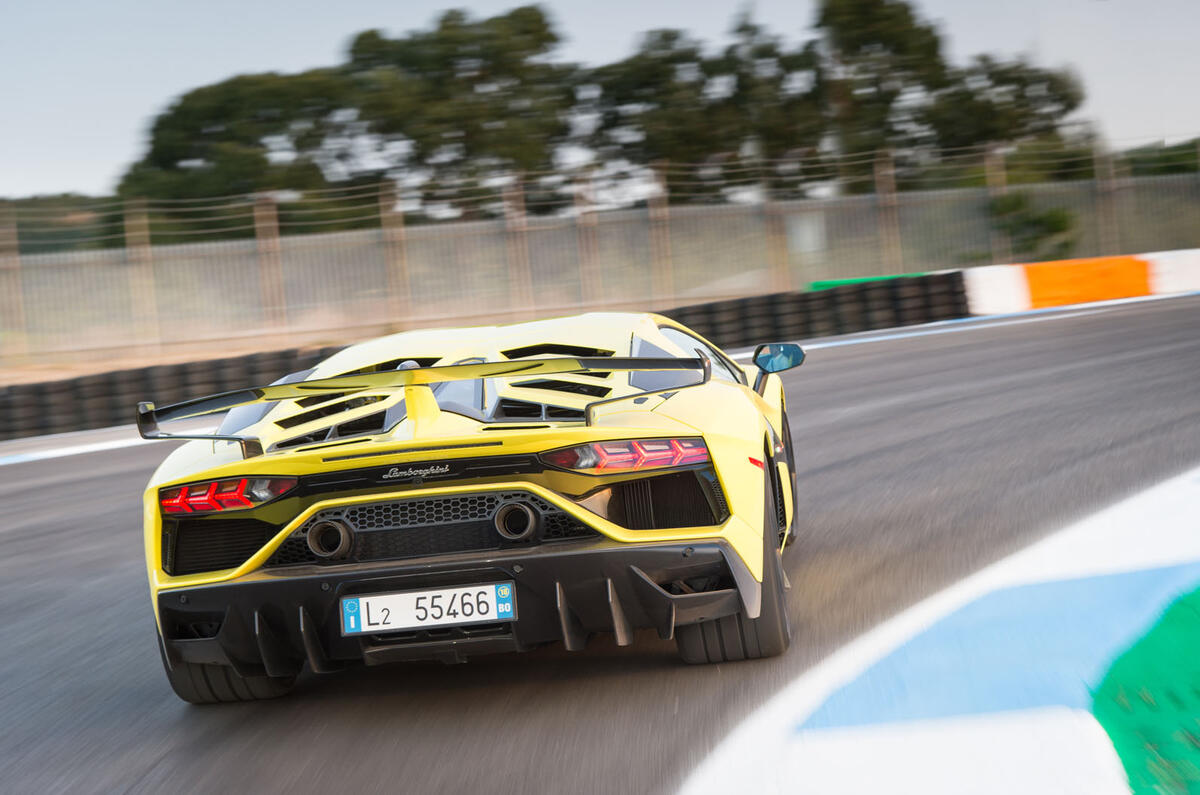
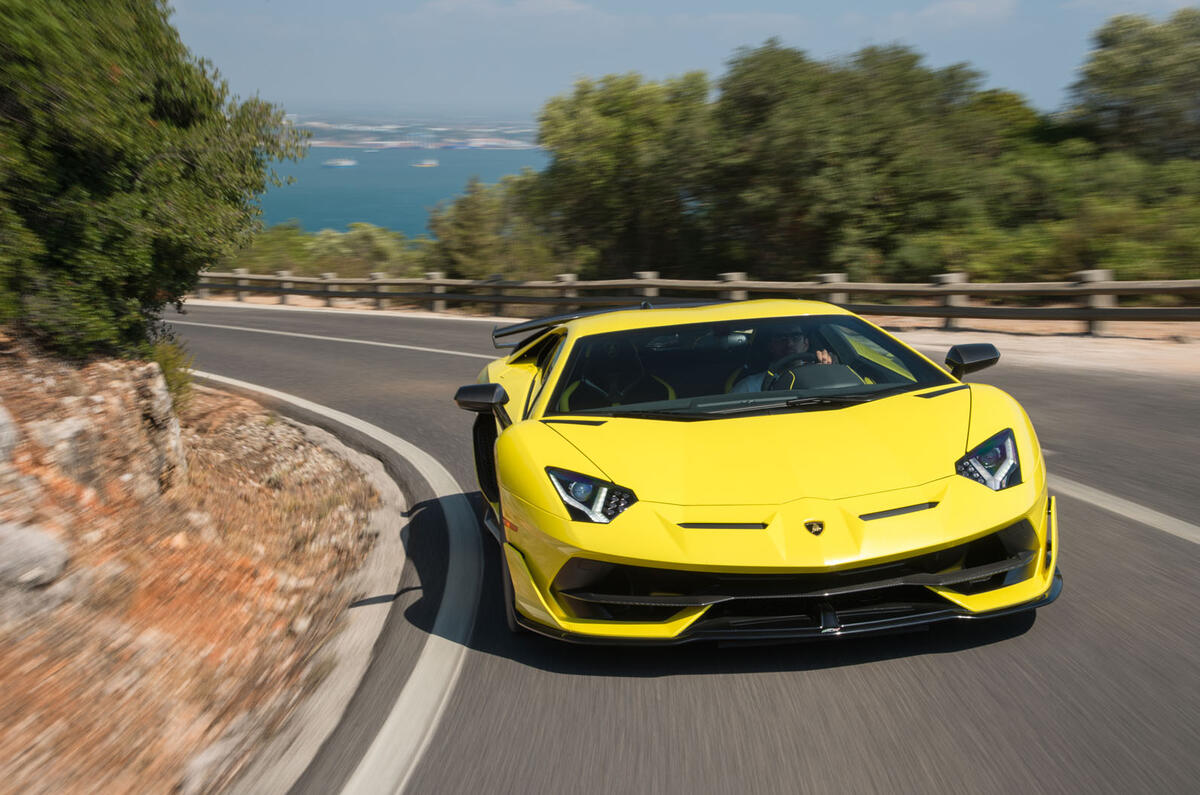
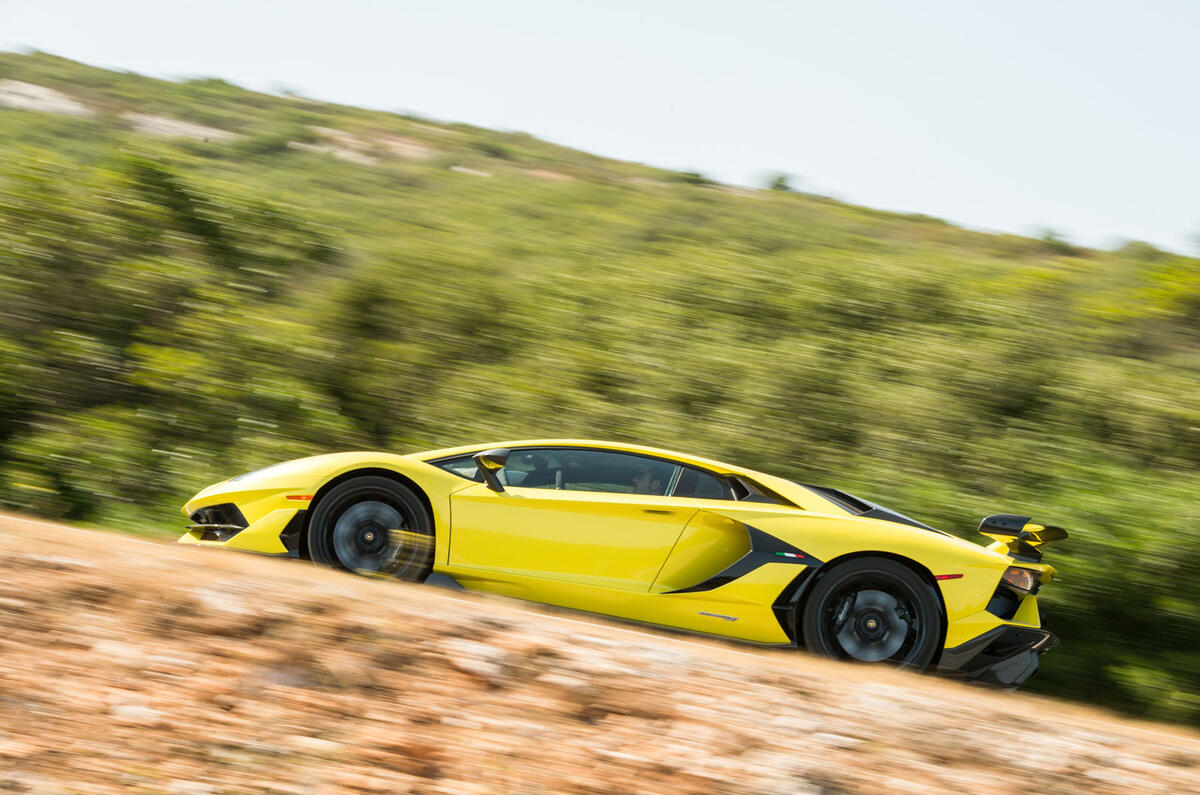

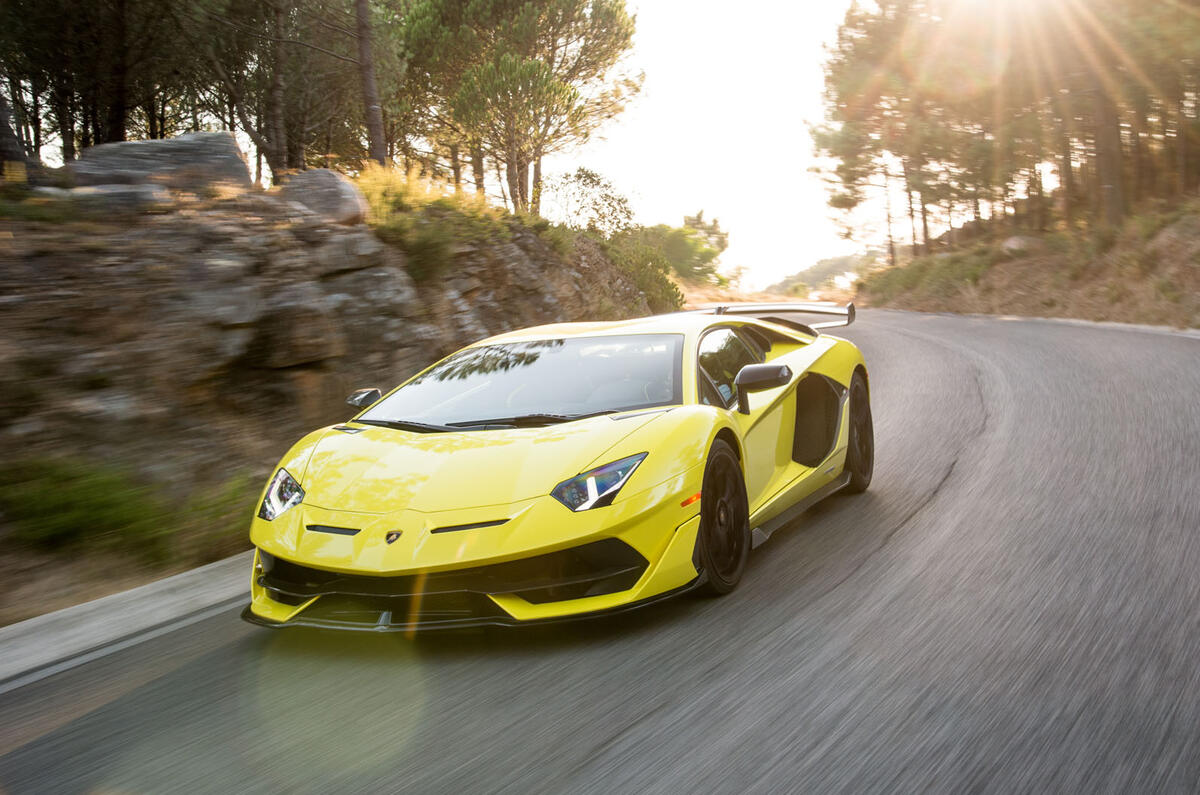
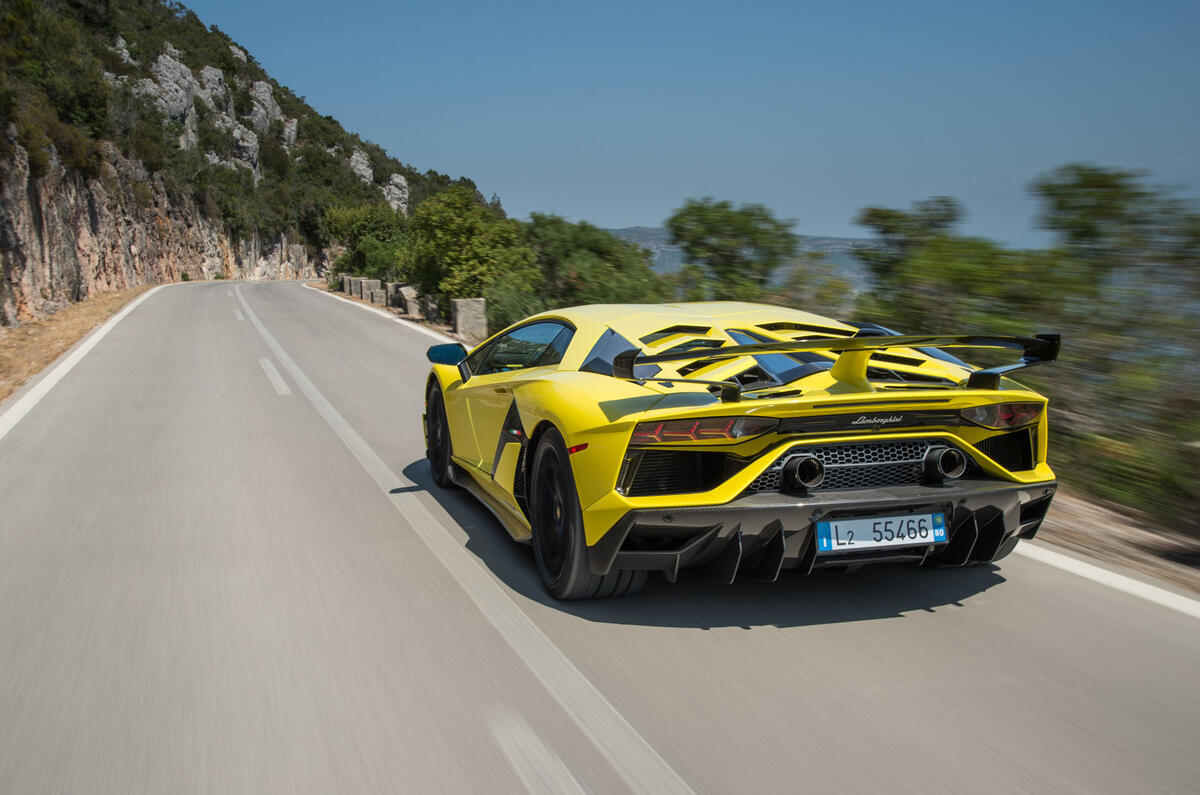
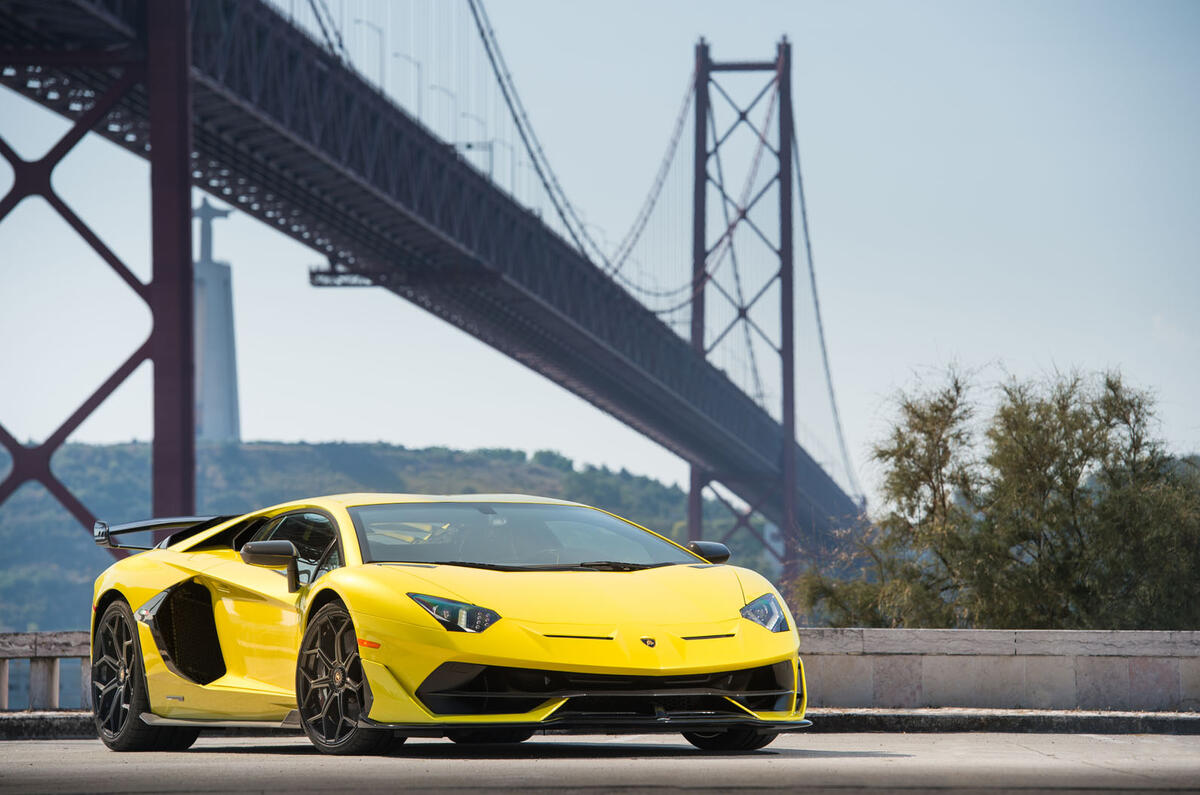
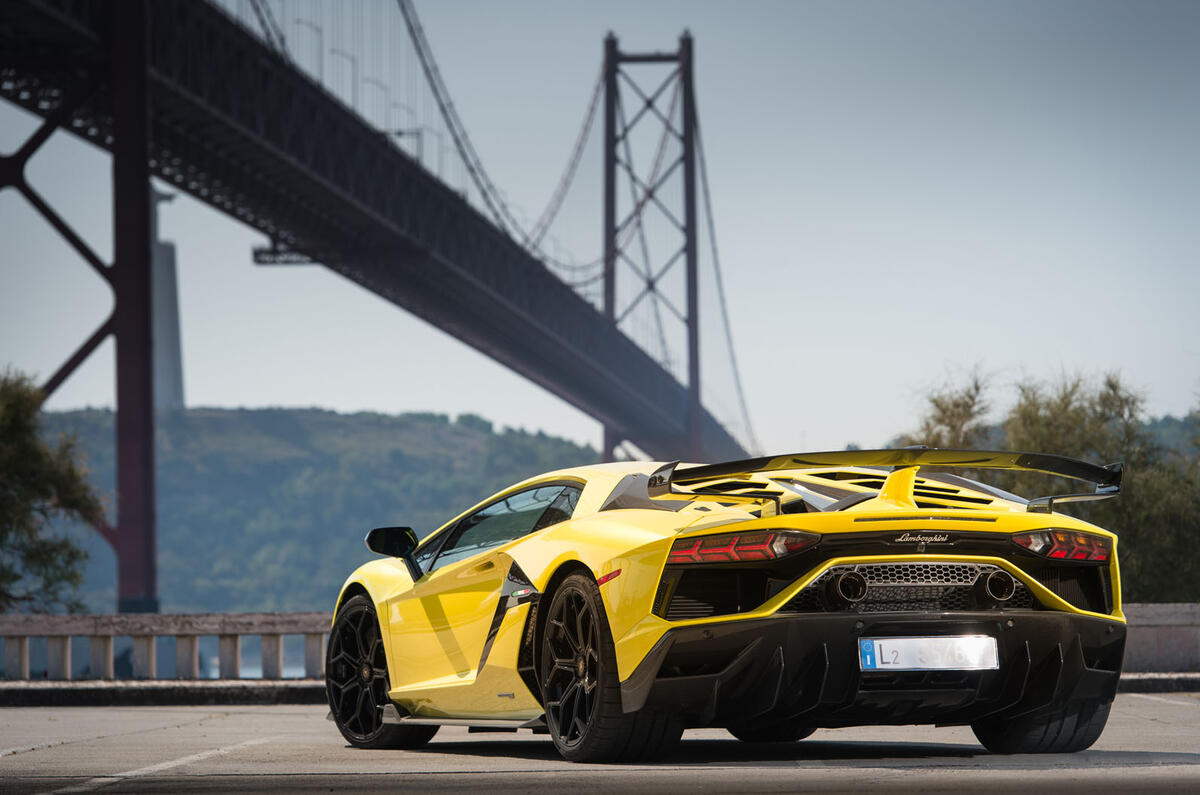











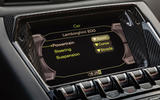
















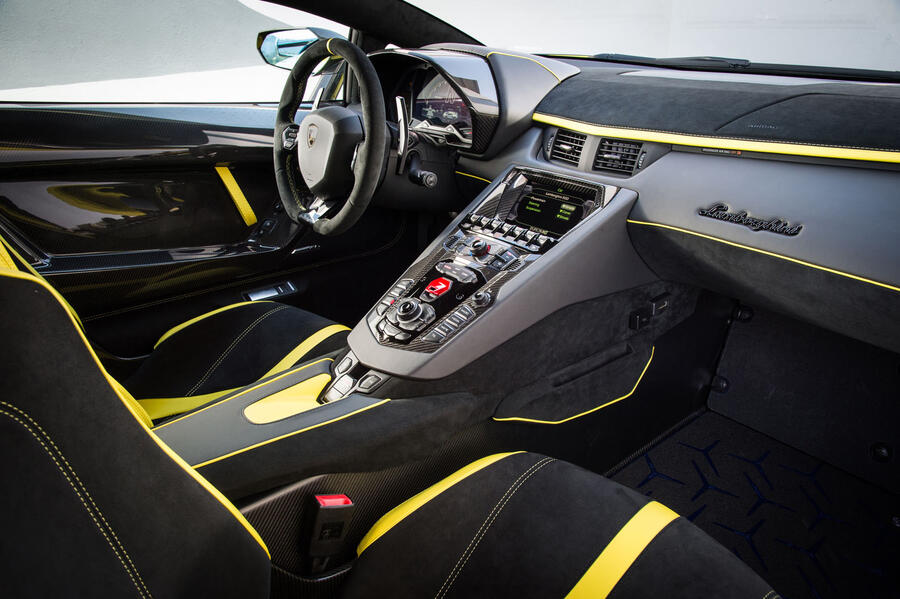
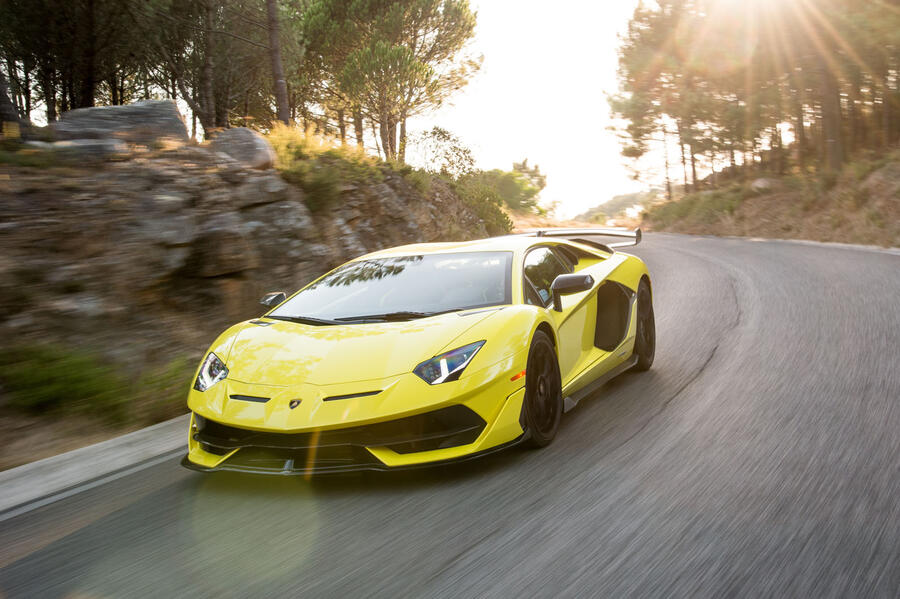
Join the debate
Lanehogger
Still 'the' definitive hypercar maker
It's not the fastest, most powerful or the most expensive hypercar but, IMO, the Aventador still typifies what a hypercar is. It looks staggering and, more importantly, it has a wonderful (non-hybrid, non-turbo V12) engine which now seems a rare beast in this type of car. In a world where almost everyone seems to be producing hypercars, which takes the shine off the genre, and where hypercars are now becoming electric or hybrid, the Aventador seems out of place but for me that's fine and all the better for it. Lamborghini has, and still does, somehow defines the hypercar. Long may it continue.
289
SVJ
....40% more downforce than an S....that will be handy around the Hans Crescent circuit.....I bet the residents are really looking forward to its enhanced bark too!!!
Its sad though, because here is an amazing car which to all intents and purpose is a dinosaur...and all the better for it. Just wish the purchasers would be individuals with the driving ability and intelligence to take it to roads which would exploit its talents.... and maybe get out of second gear.
A car less suited to London traffic is hard to find.
Peter Cavellini
A bargain price....?
Yes, this is all a Supercar needs to be, doesn’t have to be the fastest one, and it certainly doesn’t hav3 to cost a Million quid either,no, mostly it’s got to look well like a Lamborghini.........
Peter Cavellini.
jason_recliner
Changed My Mind
Forget all that. Realistically, if I could afford one, I could afford both. Surely that'd be the way to go.
Overdrive
jason_recliner wrote:
I'll take the Lambo's engine alone over any McLaren, every day, week and month, never mind its fabulous looks and drama.
It's just so much more desirable.
michael knight
looking a bit past it, but
looking a bit past it, but still an event to drive, i'm sure.
eseaton
Almost perfect in all the
Except for that terrible gearbox.
Such a shame there isn't a manual option for those who can drive, and a good auto for those who can't.
Add your comment